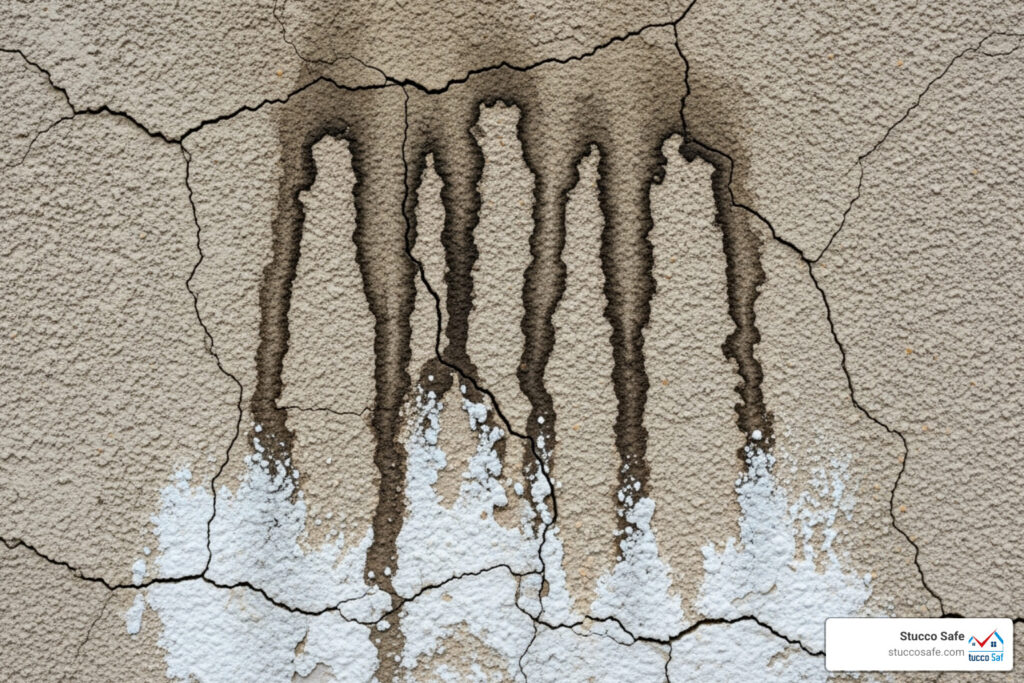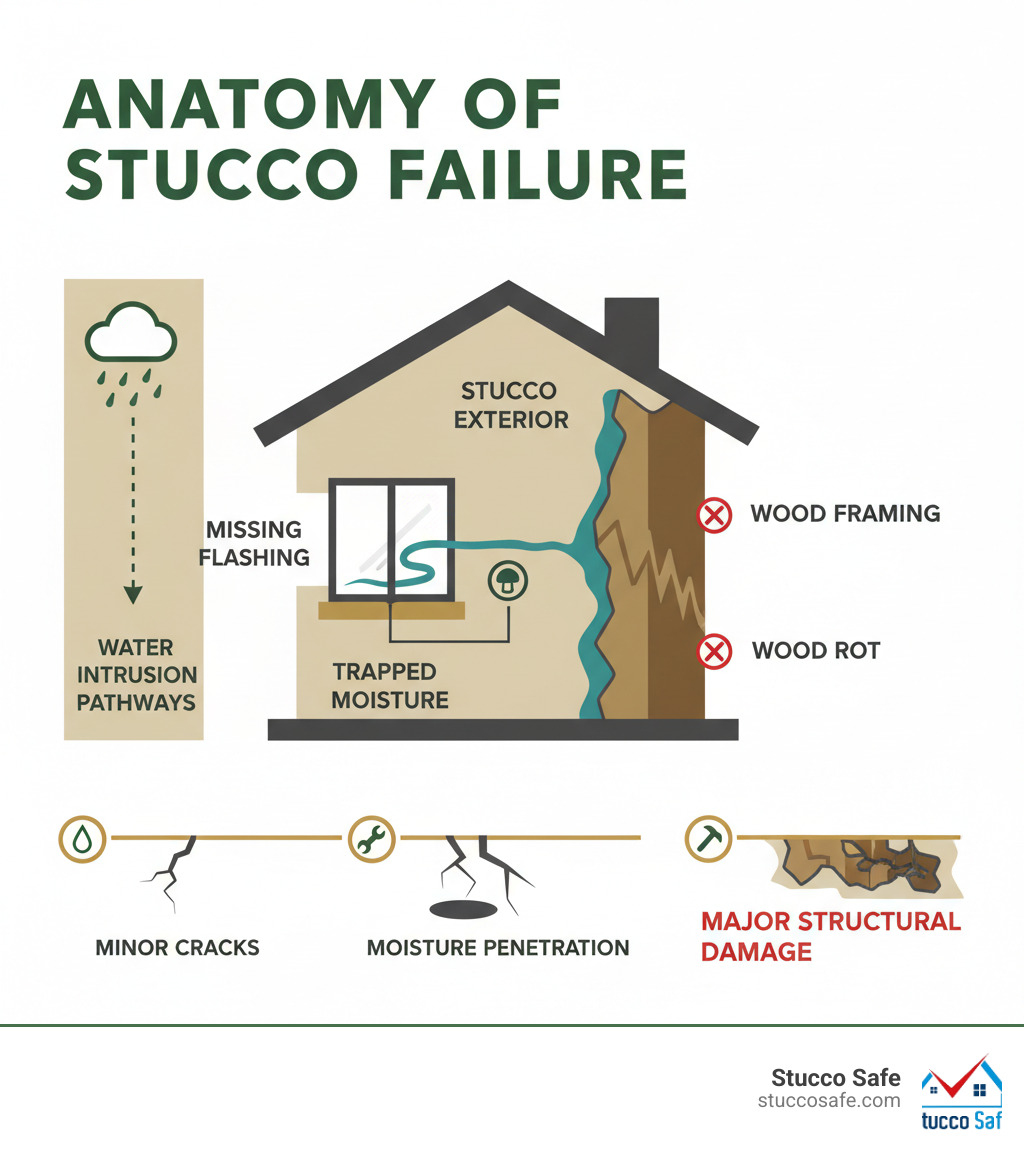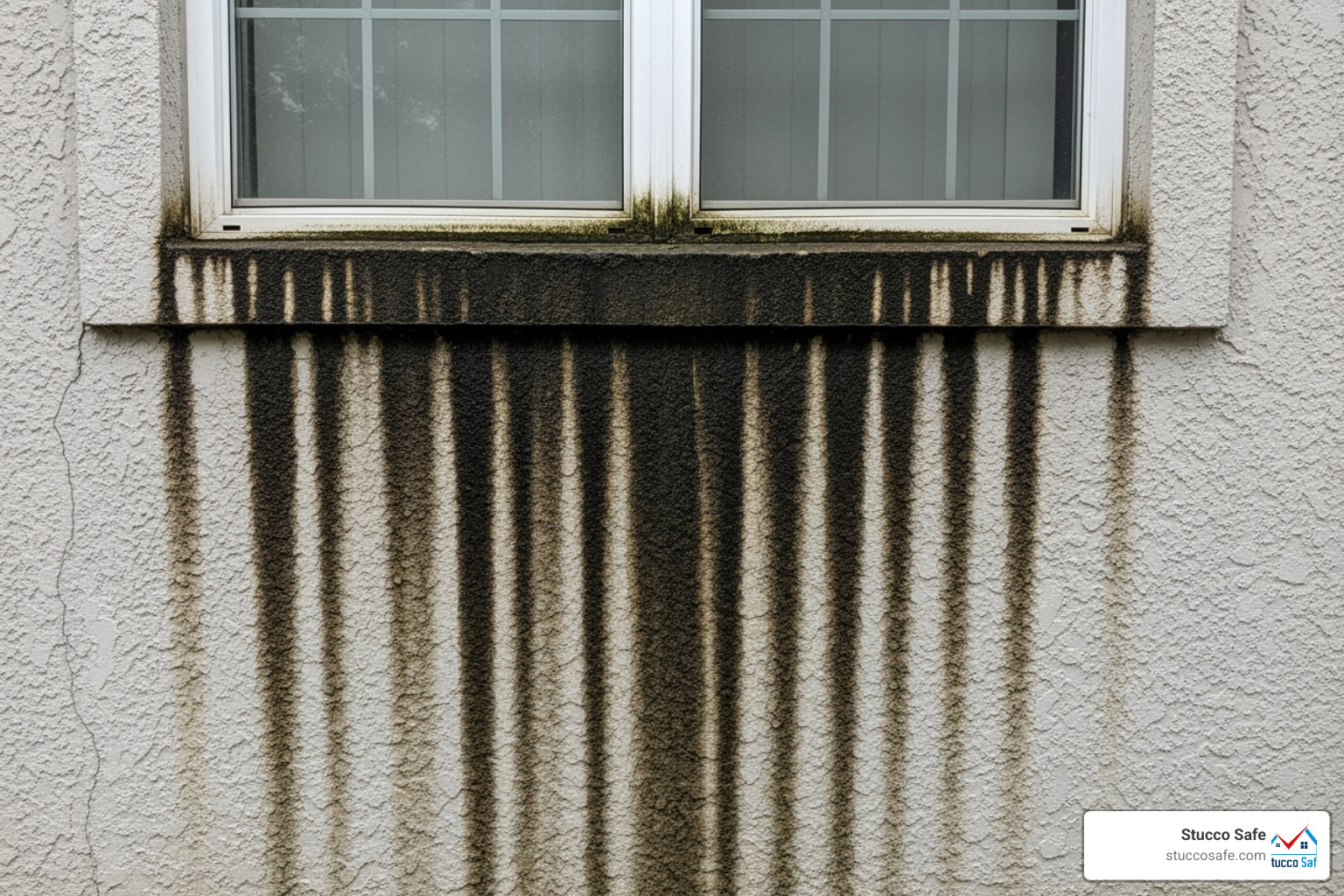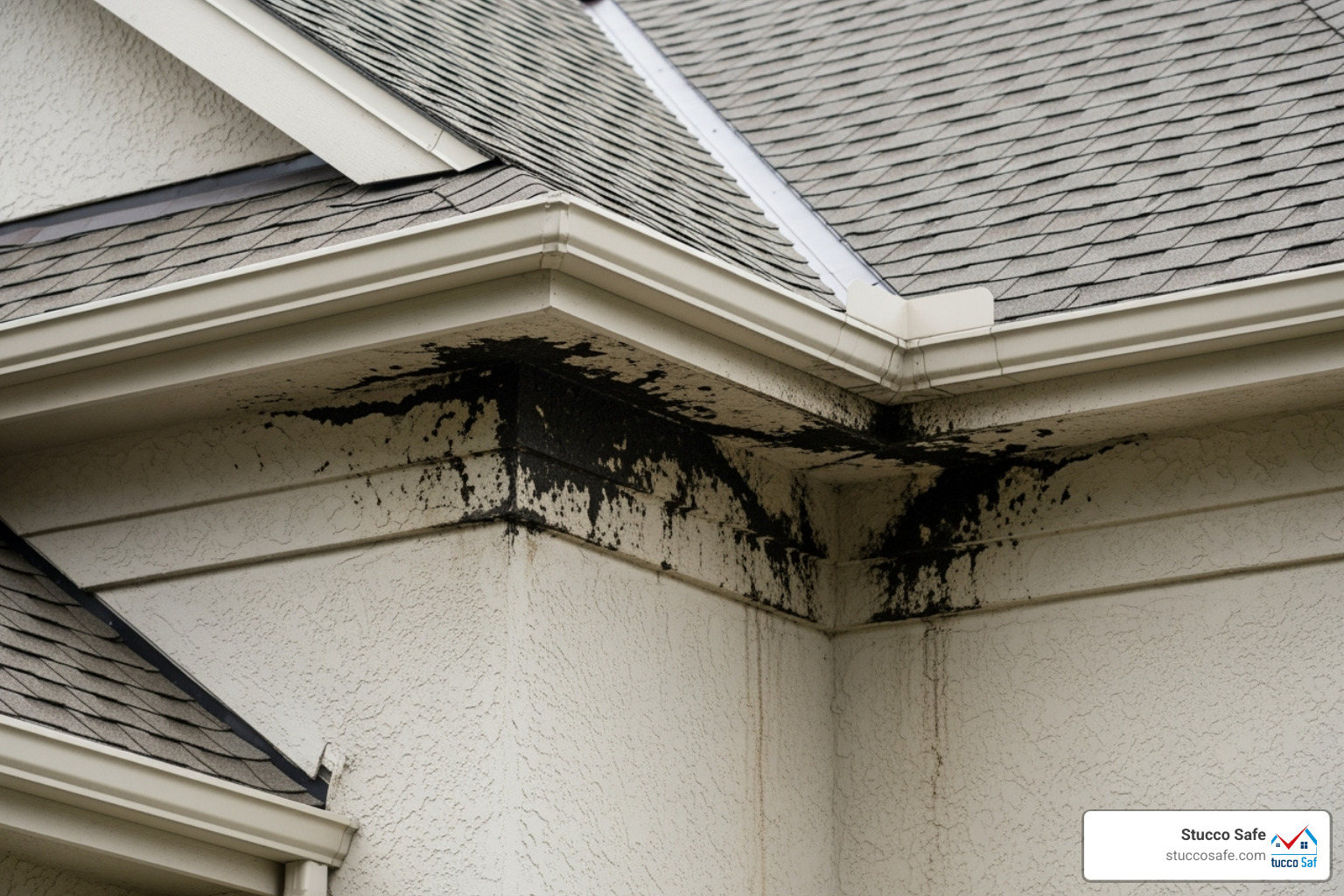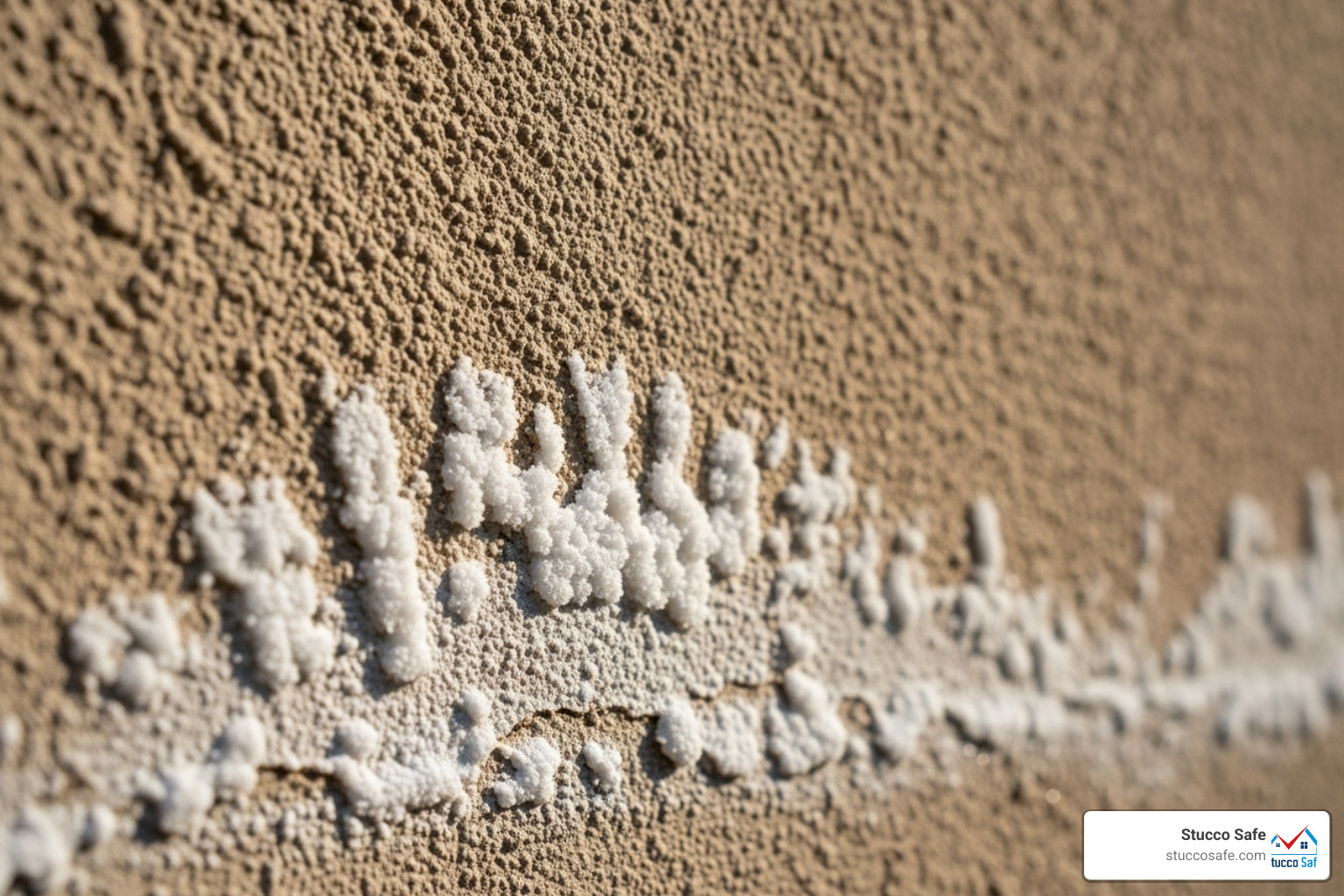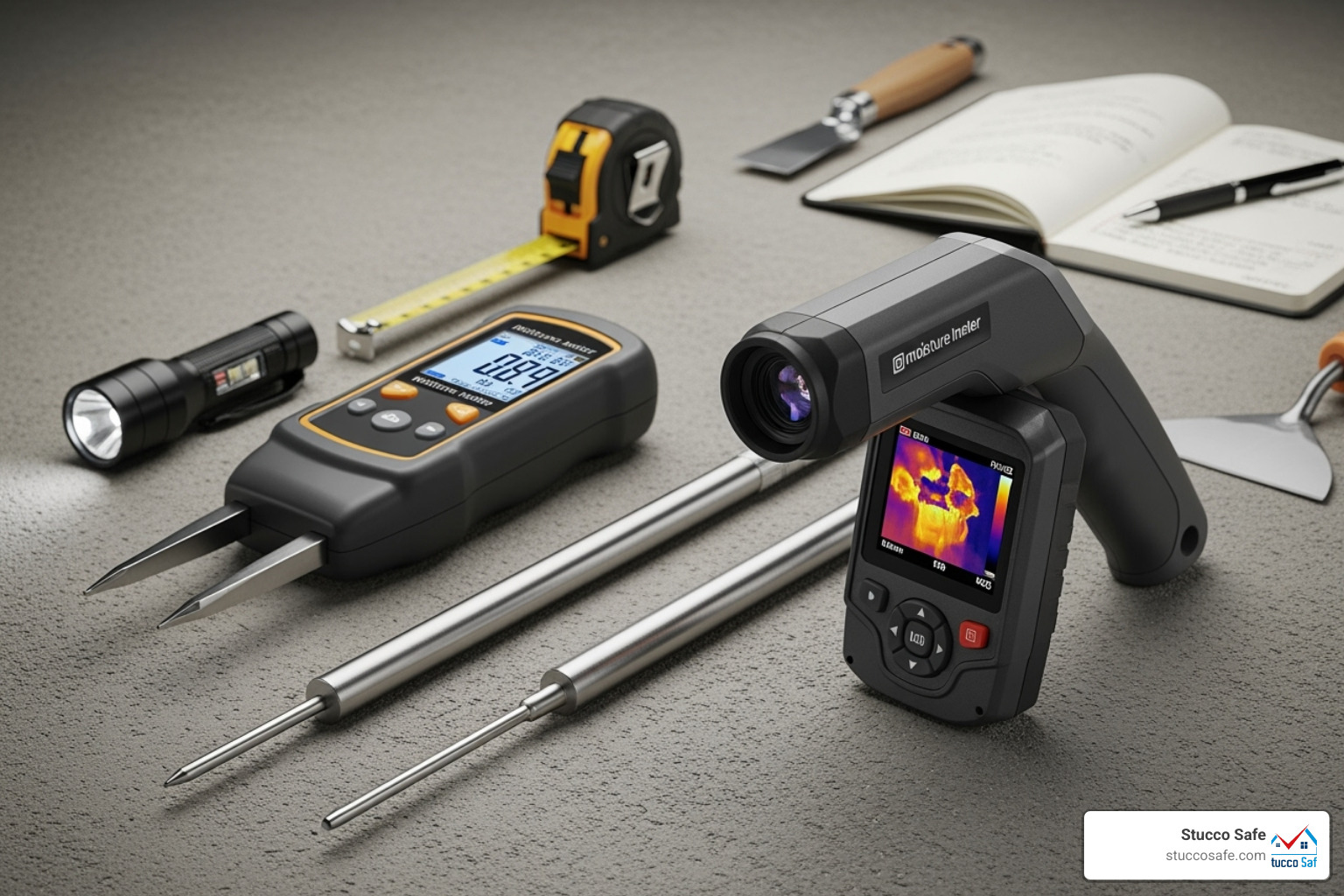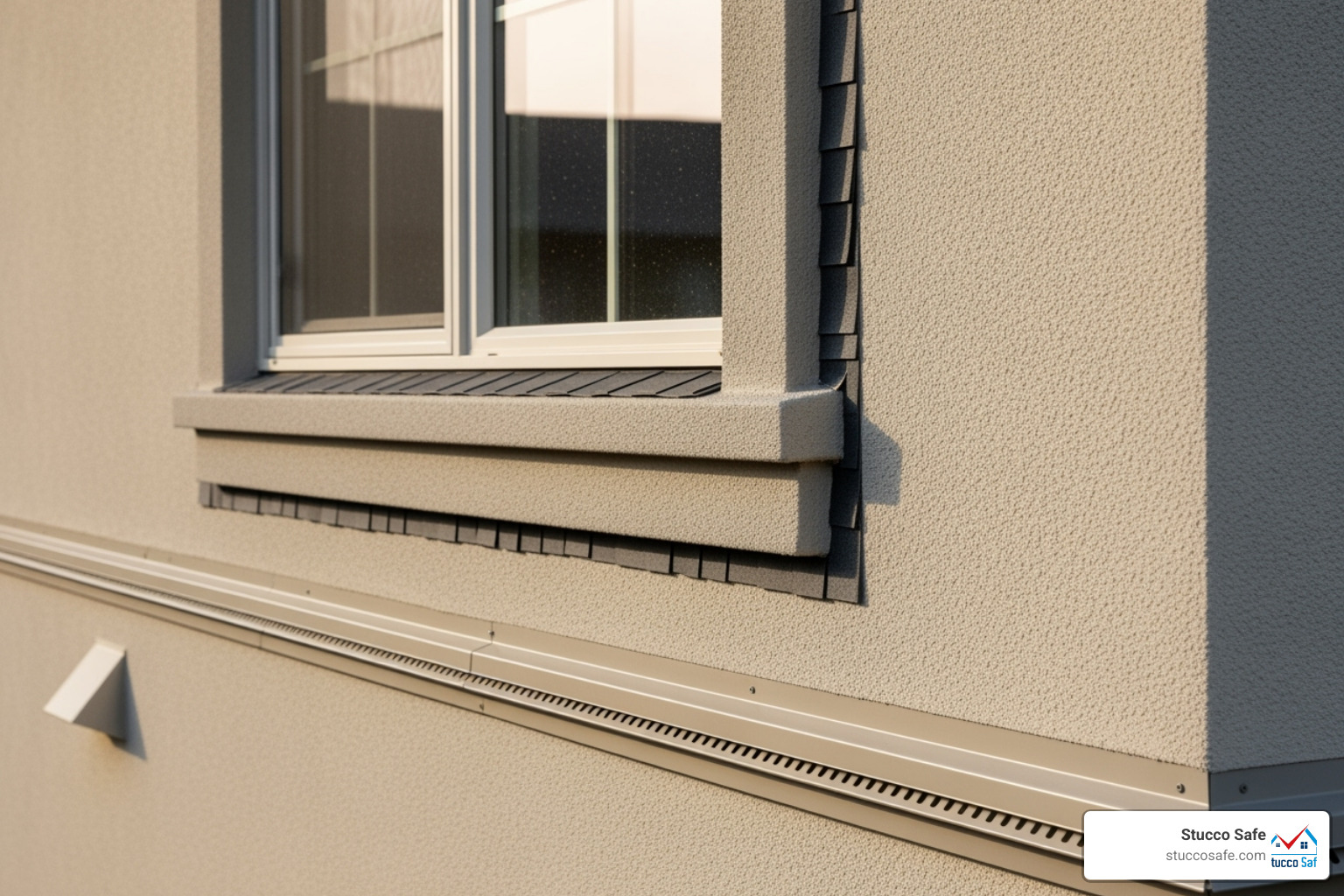Stucco Construction Defects: 5 Warning Signs
What Are Stucco Construction Defects and Why Should You Care?
Stucco construction defects are flaws in the installation or design of a stucco system that lead to moisture intrusion, structural damage, and costly repairs. Stucco itself—a durable and popular finish made of cement, sand, and water—is rarely the problem. Research shows that defects are primarily due to poor workmanship.
Common defects include:
- Improper Installation: Incorrect thickness, missing air gaps, or poor surface preparation.
- Water Intrusion: Moisture becomes trapped behind the stucco, causing wood rot and mold.
- Flashing Failures: Missing or improperly installed kick-out flashing and weep screeds.
- Design Flaws: Inadequate drainage systems or expansion joints.
The consequences are severe, with repairs often costing 20-40% of a property’s value. Thousands of homes may have hidden damage that goes unnoticed until it becomes extensive.
I’m Gabe Kesslick, a certified building envelope forensic inspector. Since 2001, my company, Stucco Safe, has helped homeowners in Southeastern Pennsylvania, New Jersey, and Delaware identify hidden moisture damage before it becomes catastrophic.
The Root of the Problem: Common Stucco Construction Defects
Our experience and research consistently show that the stucco product itself is rarely the villain. The problem is primarily due to defects in workmanship. Most stucco construction defects stem from human error during installation, not flaws in the stucco mixture.
The main culprits behind stucco failure include:
- Improper Installation: This is the most common issue, covering everything from incorrect mixing and application thickness to rushing the curing process.
- Water Intrusion: Stucco is designed to manage some moisture, but it fails when water gets trapped behind it, leading to hidden damage.
- Design Flaws: Architectural plans that lack proper water drainage details around windows, doors, or rooflines create vulnerabilities.
- Substandard Materials: Using low-quality cement or weak lath (the mesh holding the stucco) can cause premature failure.
- Climate Challenges: Humid climates with heavy rain, like in Florida, put extra stress on stucco systems, accelerating damage from minor defects.
These defects can lead to significant structural damage, mold growth, and a major drop in property value, with repairs costing “20–40% of the value of the property.”
The Critical Role of Water Intrusion
Stucco is not waterproof; it’s a “reservoir system” designed to absorb some moisture and allow it to drain or evaporate. The trouble begins when water gets in but can’t get out. This trapped moisture is the root of many stucco construction defects and can lead to:
- Wood Rot: The underlying wood framing and sheathing become compromised, weakening your home’s structure.
- Mold Growth: Dampness inside walls creates a breeding ground for mold, which can cause serious health issues.
- Hidden Damage: The most insidious aspect of water intrusion is that the damage often goes unnoticed for years. By the time you see stains, the underlying structure may already be severely compromised.
Exterior insulation and finish systems (EIFS), or synthetic stucco, can be particularly problematic. As a “barrier system,” it often lacks a secondary moisture barrier. If the outer layer is breached, water gets trapped with no way to escape.
How Improper Installation Causes Stucco Construction Defects
The vast majority of stucco construction defects are due to poor workmanship. Key installation mistakes include:
- Incorrect Thickness: Stucco should be about 7/8-inch thick. We often find it applied as thin as 1/4-inch, making it prone to cracking and water absorption.
- Insufficient Curing: Rushing the drying process results in weak, brittle stucco that cracks easily.
- Missing Drainage Plane: A correctly installed system needs a weather-resistive barrier (WRB) and an air gap to allow water to drain. Without this, moisture gets trapped, causing rot and mold.
- Inadequate Reinforcement: Missing or poorly installed lath wire, which gives stucco its strength, can lead to cracking, bulging, or detachment.
For a deeper dive into these issues, you can review more details on common construction defects with stucco homes.
Failures in Flashing and Sealing
Flashing and sealants are critical for directing water away from vulnerable areas. When they fail, stucco construction defects are almost inevitable. Common failure points include:
- Weep Screeds: Located at the bottom of a stucco wall, these allow trapped moisture to escape. If they are missing, blocked, or installed incorrectly, water pools at the base of the wall.
- Kick-Out Flashings: These are essential where a roofline meets a wall. Without them, rainwater can pour down the wall, overwhelming the stucco system.
- Window and Door Flashings: Improper flashing around openings creates direct pathways for water to enter the wall cavity.
- Expansion Joints: These joints allow for natural movement and prevent cracking. If they are missing, the stucco can crack under stress, creating new entry points for water.
Proper integration of flashing is crucial. When these components are overlooked, the stucco system cannot manage water effectively, leading to extensive and costly damage.
Spotting the Red Flags: 5 Warning Signs of Stucco Failure
Catching stucco construction defects early can save you significant money and stress. While some issues are minor, many visual cues demand attention. Homeowners in Southeastern Pennsylvania, New Jersey, and Delaware should be vigilant for these top warning signs:
- Cracking, Bulging, or Buckling
- Stains and Discoloration
- Efflorescence (White, Powdery Deposits)
- Mold or Mildew Growth
- Delamination or Peeling
Regularly inspecting your home’s exterior is your first line of defense. Knowing what to look for helps you intervene before minor issues become catastrophic.
1. Cracking, Bulging, or Buckling
Cracks are a common sign, but not all are cause for alarm. Minor hairline cracks are often superficial. However, you should be concerned about:
- Large Cracks: Cracks wider than a credit card are a significant red flag, indicating potential structural movement or severe underlying issues.
- Pattern Cracking: A grid-like pattern of cracks can point to improper lath installation or a lack of expansion joints.
- Bulging or Buckling: When stucco pushes outwards, it’s a critical warning. This often means water has gotten behind the stucco, causing the underlying wood to swell or the metal lath to rust and detach. This can also be a sign of delamination, where stucco layers separate from the wall.
Any of these signs, especially when combined, warrant a professional inspection to check for hidden damage.
2. Stains, Discoloration, and Efflorescence
Your stucco’s color and texture can reveal its health. These signs indicate moisture intrusion and developing stucco construction defects:
- Water Stains: Dark streaks or patches, especially below windows and rooflines, show that water is running down the wall, likely from a faulty flashing or sealant.
- Efflorescence: This is a white, powdery deposit left on the surface as water evaporates. It is a definitive sign that water is migrating through the stucco from within the wall system.
- Rust Stains: Brownish-red streaks often mean that internal metal components like nails or lath are corroding due to moisture exposure.
- Mold or Mildew: Green or black fuzzy patches indicate organic growth. Widespread mold suggests moisture is trapped behind the stucco, creating a health hazard and signaling a severe underlying problem.
Seeing these signs means water is actively damaging your wall assembly and requires immediate attention.
Traditional Stucco vs. Synthetic (EIFS): A Defect Comparison
Understanding the difference between traditional stucco and synthetic stucco (EIFS) is key, as their vulnerabilities to stucco construction defects are very different.
| Feature | Traditional (Hard Coat) Stucco | Synthetic Stucco (EIFS) |
|---|---|---|
| Material | Portland cement, sand, lime, water. | Foam insulation board, base coat, synthetic finish. |
| Water Management | Drainable System: Porous; relies on a secondary barrier (WRB) and weep screeds to drain water. | Barrier System: Designed to be waterproof at the surface; often lacks a drainage path. |
| Common Defects | Cracking, moisture intrusion if flashing/WRB fails. | Severe moisture trapping if surface is breached, leading to extensive rot and mold. |
| Vulnerability | Failures often due to installation errors in the water management system. | Failures often due to surface punctures and the lack of a drainage system. |
Traditional (Hard Coat) Stucco
Traditional stucco is a time-tested, cement-based product applied in multiple layers over a lath and a weather-resistive barrier (WRB). It’s designed as a drainable system. This means it relies on a well-installed WRB, flashing, and weep screeds to manage any water that gets behind the porous stucco surface, allowing it to drain out safely. When installed correctly, it is incredibly durable.
Synthetic Stucco (EIFS)
Synthetic Stucco, or EIFS (Exterior Insulation and Finish System), consists of a foam insulation board, a base coat, and a synthetic finish. Early EIFS were designed as barrier systems, intended to be completely waterproof at the surface. Crucially, they often lacked a secondary moisture barrier or drainage system. This design is a primary source of stucco construction defects. If the EIFS surface gets a small crack or puncture, water seeps in and becomes trapped. This creates a perfect environment for hidden wood rot, mold, and structural damage. While newer “drainable EIFS” systems exist, many homes with older barrier EIFS remain at significant risk.
Your Action Plan: What to Do if You Suspect Stucco Problems
If you suspect stucco construction defects, taking immediate, informed action is crucial. Start by documenting everything with dated photos and notes. If your home is under warranty, contact your builder in writing. Review your home warranty and insurance policy, but be aware that homeowners’ insurance typically does not cover damage from faulty construction.
Step 1: Get a Professional Forensic Inspection
This is your most critical step. Since many stucco failures are “often invisible on the surface,” a standard home inspection is not enough. You need a specialized forensic inspection from a certified professional.
At Stucco Safe, our certified inspectors in Southeastern Pennsylvania, New Jersey, and Delaware use forensic methods to uncover hidden issues. A professional inspection includes:
- Invasive Moisture Testing: We drill small, inconspicuous holes to insert moisture probes, getting accurate readings of the substrate behind the stucco. The holes are then sealed with color-matched caulk.
- Infrared Thermal Imaging: This helps identify temperature differences that may indicate wet materials, guiding further testing.
- Visual Inspection: We carefully examine flashings, joints, and weep screeds for proper installation.
- Detailed Reporting: You receive a comprehensive report with findings, photos, and recommendations.
It’s best to choose an unbiased, third-party inspection company that does not perform remediation. Our inspections range from $495 to $1595+, a small price compared to remediation costs that can reach hundreds of thousands of dollars. For more information, visit our stucco inspection and testing services page.
Step 2: Understand the Legal and Financial Implications
Unaddressed stucco construction defects have serious financial consequences. Repair costs can reach “20–40% of the value of the property,” and a home with known stucco issues will suffer from diminished market value.
- Insurance Coverage: Homeowners’ insurance typically excludes damage from faulty workmanship, meaning you are likely responsible for repair costs.
- Construction Defect Lawyer: If you find significant defects, consulting a construction defect lawyer is a wise step. They can help you steer claims against the builder, negotiate settlements, and represent you in litigation.
- Statute of Limitations: Be aware of legal deadlines (statutes of limitations) for filing construction defect claims, as they vary by state. Acting promptly is crucial.
- Local Building Codes: In regions like Florida, the climate has led to more stringent building codes. Understanding these local regulations is vital. You can find more information on Florida’s building codes for stucco construction.
Step 3: Taking Preventative Measures to Avoid Stucco Construction Defects
Prevention is the best strategy. Taking proactive steps can significantly reduce your risk.
- Hire Qualified Contractors: Retain professionals with proven experience in stucco and water management. Quality workmanship is paramount.
- Adhere to Building Codes: Ensure your contractor follows local codes and industry standards, such as ASTM C926 and C1063. These standards dictate proper thickness, lath installation, and flashing.
- Ensure Proper Water Management: Verify the system includes a weather-resistive barrier (WRB), an air gap, and a drainage plane, along with correctly installed weep screeds and flashings.
- Regular Maintenance: Periodically clean your stucco, inspect and re-caulk seals around windows and doors, and ensure gutters and landscaping direct water away from the foundation.
Frequently Asked Questions about Stucco Defects
At Stucco Safe, we’ve answered thousands of questions from homeowners in Southeastern Pennsylvania, New Jersey, and Delaware. Here are the most common ones.
Are all stucco cracks a sign of a serious problem?
Not every crack means disaster. Stucco is a rigid material, so minor hairline cracks from curing or normal thermal expansion are often just cosmetic.
However, you should be concerned by large cracks (wider than a credit card), pattern cracking (a grid-like formation), or cracks radiating from the corners of windows and doors. When cracks appear with other symptoms like water stains, bulging, or that white powdery efflorescence, it often signals a deeper moisture problem that needs professional inspection.
Can I fix minor stucco defects myself?
While it’s tempting to DIY minor cosmetic touch-ups with stucco patch compounds, what you see on the surface is often just the tip of the iceberg. An innocent-looking crack could be a symptom of serious hidden water intrusion, rot, or mold.
Attempting a DIY repair without understanding the root cause can make things worse. You might accidentally seal a drainage path, trapping moisture inside the wall. For anything beyond a superficial fix, or if you suspect water intrusion, we strongly recommend a professional forensic inspection first to diagnose the real problem.
Does homeowners insurance typically cover stucco failure?
This is a critical point for homeowners: homeowners insurance typically does not cover stucco construction defects or the resulting damage.
Standard policies cover sudden, accidental events, but they almost always exclude damage from faulty construction, defective materials, or long-term moisture issues. Since most stucco construction defects are due to poor workmanship, insurance companies will likely deny the claim.
This reality means the financial burden of repairs—which can be substantial—usually falls on the homeowner unless you can pursue a claim against the responsible builder or contractor. This is why early detection, professional inspection, and proper documentation are so important.
Conclusion: Protect Your Home and Investment
When it comes to stucco construction defects, knowledge is your best defense. Most stucco problems stem not from the material, but from installation errors like missing flashing or improper drainage. You’re now equipped to spot the warning signs, from telltale cracks to water stains, which are your home’s cry for help.
Early detection is everything. The real damage—wood rot and mold—often lurks unseen behind the stucco. That’s where forensic testing is essential. At Stucco Safe, our certified inspectors don’t just look at your stucco; we use specialized moisture meters and testing techniques to uncover the hidden moisture that silently damages your home.
Our comprehensive inspections, ranging from $495 to $1595+, are a small investment compared to repair costs that can reach 20-40% of your property’s value. Your home is your largest investment. Don’t let hidden defects compromise it.
If you’re in Southeastern Pennsylvania, New Jersey, or Delaware, we’re here to provide the peace of mind that comes from knowing the true condition of your stucco. Take action before small problems become big expenses.
Schedule your comprehensive stucco inspection today and protect what matters most.

